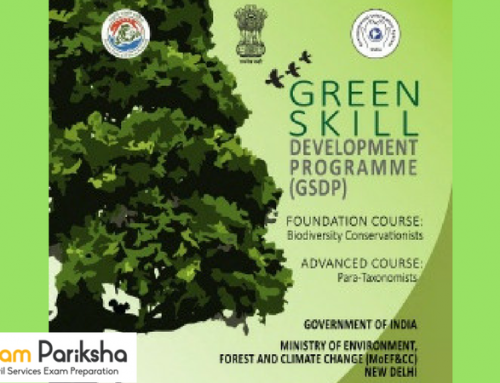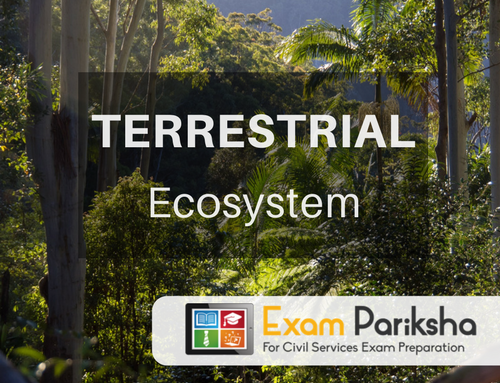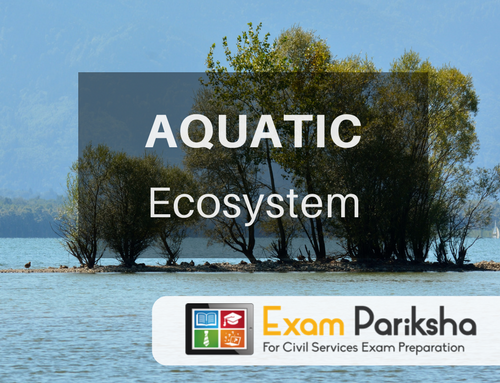The Indian Himalayan Region occupies a Strategic Position Along the Entire Northern and Northern Eastern Boundary.
Besides Innumerable goods, IHR Generates Plethora of Services not only for Himalayan Inhabitants but also Influence the Lives of the People Living Beyond its Boundaries.
- With the Vast Green Cover, IHR also Acts as a giant Carbon ‘Sink’.
- IHR Also form Considerably Large Part of identified Himalayan Biodiversity Global Hotspot.
- Role in Indian Climate regulation
Steps by the Government to safeguard the region:
The ban on Plastic in HP:
- State Government has enacted the Himachal Pradesh Non- Biodegradable Act in 1995 in Order to Prevent and Throwing and Depositing Garbage in Public Place.
- It was then increased the Minimum Thickness of the Plastic bags of 70 Microns of Virgin Material Which Exceeded the 20 Microns Thickness Recommended by Central Rules.
- The State Government took a Cabinet Decision to Ban Plastics Altogether in the entire state since 2009.
Pilgrimage Tourism in Sensitive Areas:
- The Himalayans are Known to be a Home of Saints, Destination of Pilgrimage Since Time immemorial. For Example, Badrinath, Kedarnath, Gangotri.
- Also There is Gross Lack of Regulatory Mechanisms for infrastructure Creation, Management and for controlling the Tourist inflow in such Cities.
- As a Result, the Sensitive Ecosystem and Culture Values of these Areas Are Facing Pressure far beyond their Carrying Capacities.
Initiatives:
- Encourage them to Undertake Participatory Plantation for Rehabilitation of Degraded Areas in these pilgrim centres.
- Involving them in Maintenance and Strengthen of Scared Groves and Landscapes.
Rain Water Harvesting System:
- All Buildings Constructed in Future in Urban Areas Should Have Provision for roof top Rain Water Harvesting.
- In Rural Areas Harvesting Should Be Undertaken Through Such Structures as Percolation Tanks, Storage Tanks, and Any Other Means.
- Rain Water Collected through Storm Water Drains Should be used to Clean the Water Disposal Drains and Sewers
- Ground Water Aquifer Recharge Structure Should Be Constructed Wherever Such Structure do not Lead to Slope Instabilities.
Sand Mining in India: Environmental Issue
Sand is the Most Important Mineral in our Society in Protecting the Environment, Buffer Against Strong Tidal Waves and Strom, Habitat for Crustacean Species and Marine Organisms, used for Making Concreate, Filling Roads, Building Sites, Brick Making, Making Glass, Sandpaper and Reclamations
Sand Acts as Aquifer and as a Natural Carpet on the Bottom of the River. Stripping this Layer Leads to Downstream Erosion, Causes Changing in Channel Bed and Habitat Type, As Well as Deeping the River and Estuaries.
Environmental Consequences of excessive sand mining:
- Forcing the River to change it Course
- Illegally Dredged Sand is Equivalent to Robbing Water.
- Depletion of Groundwater Tables.
- Adversely Impacting the Habitat of Microorganisms.
- Increases River Erosion
- Damages to Roads and Bridges.
- Threat to Agriculture.
- Damage to Coastal Ecosystem
- Lesser Availability of Water for industrial, Agricultural and Drinking Purpose.
- Loss Employment to Farm Workers.
- Threat to Live hoods.
Palm Oil Issues and Role in India:
Palm oil has emerged as the Main Global Source of vegetable oil due to adequate Availability Versatility in usage, Higher Yield and Lower Cost, as Compared to other Oils.
Palm Oil forms 33% of the world Vegetable Oil Production Mix. Indonesia and Malaysia Contributes 87% of the Palm Oil Whereas, China and India Imports around 34% of the Palm Oil.
Applications of the Palm Oil:
- Food Based Applications: Cooking oil, Substitute for Butter, Margarine, Confectionary and Bakery fats.
- Non Food Applications: Cosmetics, Toiletries, Soaps and Detergents. Oleo Chemical Industry, As a Base Material for Laundry Detergents, Households Cleaners and Cosmetics.
India Oil Palm:
Indonesian Palm Oil Companies Produce Palm oil by Destroying Virgin Rainforest and Tiger habitat in Indonesia. India Palm Oil Destroying Indonesian’s Rain forest.
Almost 90% of the Palm oil imported and Produced Domestically ids used for the Edible or Food Purpose While the Remaining is used for the Industrial and Non Edible Use.
Andhra Pradesh is the Leading Producer State in India Contributing Approximately 86% of the Country’s Production Followed by Kerala and Karnataka.
Subsidies for Imported the Palm Oil:
- To Provide Relief, in Particular BPL Households from the Rising Prices of the Edible Oils, the Central Government Introduced the scheme for Distribution of up to 10 Lakh tons of the Imported.
- This Scheme was Extended During 2009-10 and in 2011-2012. After the Implementation of this Scheme, Edible Oil Prices Have Substantially Declined and Poorer Sections at subsidized Rates.
- OPDP Was Launched During the 1991-92 Under the Technology Mission on oilseeds and Pulses with a Focus on Expansion of Area Under oil Palm Cultivation.
- The 12 States Provide the Oil Palm Subsidies: Andhra Pradesh, Assam, Gujarat, Goa, Karnataka, Kerala, Maharashtra, Mizoram, Orrisa, Tamil Nadu, Tripura West Bengal.
Principles for Growers to be RSPO Certified:
- Commitment to Transparency
- Compliance with Applicable Laws and Regulation
- Commitment to Long Term Economic and Financial Viability.
- Use of appropriate best Practices by Growers and Millers.
- Responsible Development of new Planting.
- Commitment to Continuous improvement in key areas of the activity.
Colony Collapse Disorder:
Colony Collapse Disorder (CCD) is a new tag name which is Presently Being Given to a Condition that is Characterized by an unexplained Rapid Loss of a bee Colony’s Adult Population.
Symptoms:
- Contain no Adult bees, With Few to no Dead Bees Around the Colony.
- Contain Capped Food.
- Contain Food stores that are no to be Robbed by neighbouring bees of Colony Pest.
- Worker bees Failed to Return to Colony from Flight.
Causes:
- Global Warming:
Global Warming Causes Flowers to Bloom Earlier or Later than Usual. When Pollinators Come out of Hibernation, the Flowers that Provide the Food they need to Start to start the Season has already Bloomed.
- Parasites:
European Foulbrood is being Detected in US Microsporidian Fungus Nosema.
- Malnutrition:
Beekeepers Collect bee honey so human Can Consume it, they Replaced it with high Fructose Corn Syrup.
- Metal Pollution:
Bees Absorbing Metal Pollution from Flowers and then Absorbed it from the Soil that absorbed it from Modern Machines and Vehicles.
- Stress:
The Stress of Shipping Bees back and forth Across the Country, increasingly Common in the Commercial Beekeeping, may be Amplifying the Stress on then insects and Leaving Them More Vulnerable to CCD.
- Neonicotinoids:
This New Class insects are Related to nicotine. The name Literally Means New Nicotine Like Insecticides. It Share a Common Mode of Action that affect the Central Nervous System of Insects and Resulting paralysis and Death.
Neonicotinoids can also be Persistent in the Environment, and When used as Seed Treatments, Translocate to Residues in Pollen and Nectar of Treated plants.
Impacts of the Radiation from Mobile Phones:
The Popular Demand in increase in Mobile Phones users in the Country and Mushrooming of the Mobile Tower installations on every nook and Corner of the cities and Tower has been Raised:
- The Surface Area of bird is Relatively larger than their Body Weight in comparison to Human Body so they Absorbs More Radiation.
- Also the Fluid Content in the Body of the Bird is Less due to the Small Body Weight so it gets heated up Fast.
- Magnetic Field from the towers Disturbs Birds Navigation Skills Hence When Birds Are Exposed to EMR the Disorient and begin to fly in all Directions.
- A large Number of Birds Die Each Year from Collisions with Telecommunications.
Cost of Environmental Degradation in India:
The Annual Cost of Environmental Degradation in India is About Rs.3.75 Trillion, or 5.7% of India 2009n Gross Domestic Product, According to a Report by the World Bank.
Environmental Pollution, Degradation of Natural Resources, Natural Disasters and Inadequate Environmental Services, such as Improved Water Supply and Sanitation, Impose Cost to Society in the Form of ill Health.
Steps Taken by the Indian Government for Control:
- Formulation of a Comprehensive Policy for Abatement of Pollution.
- Supply of Improved Auto-fuel.
- Tightening of Vehicular and Industrial Emission norms,
- Management of Municipal, Hazardous and Bio Medical Wastes.
- Promotion of Cleaner Technologies
- Assessment of Pollution Load.
- Source Apportionment Studies.
- Preparation and Implementation of Action Plans for Major Cities & Critically Polluted Areas.
- Public Awareness





